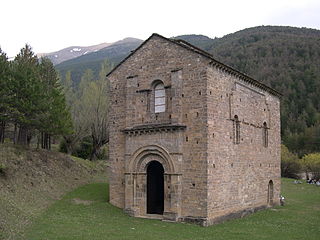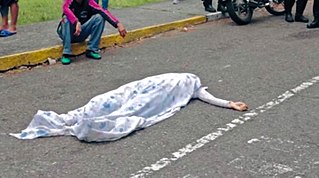 W
WThe cultures of Venezuela are diverse and complex, influenced by the many different people who have made Venezuela their home. Venezuela has distinctive and original art, literature and music.
 W
WThe Academia Venezolana de la Lengua is an association of academics and experts on Venezuelan Spanish, the variant of the Spanish language in Venezuela. It was founded in Caracas on July 26, 1883. It is a member of the Association of Spanish Language Academies.
 W
WAjí dulce, ají cachucha, quechucha, ajicito, or ají gustoso is any of a variety of sweet perennial peppers found in Latin America and the Caribbean. It is most widely known in Cuba, Jamaica, Puerto Rico, Dominican Republic and Venezuela, where it refers to a specific native variety of Capsicum chinense that is related to the habanero but with a much milder, smoky flavor. In the English-speaking Caribbean, it is known as seasoning pepper and is essential to a variety of traditional dishes.
 W
WA Bien de Interés Cultural is a category of the heritage register in Spain. The term is also used in Venezuela and other Spanish-speaking countries.
 W
WBigott Foundation is a private institution in Venezuela; it is dedicated to "preserving and making known the values of traditional culture".
 W
WThe cinema of Venezuela is the production and industry of filmmaking in Venezuela. Venezuelan cinema has been characterised from its outset as propaganda, partially state-controlled and state-funded, commercial cinema. The nation has seen a variety of successful films, which have reaped several international awards. Still, in terms of quality, it is said that though "we can point to specific people who have made great films in Venezuela [and] a couple of great moments in the history of Venezuelan cinema, [...] those have been exceptions". In the 21st century, Venezuelan cinema has seen more independence from the government, but has still been described as recently as 2017 to be at least "influenced" by the state.
 W
WCuando quiero llorar no lloro is the fifth novel by Venezuelan writer Miguel Otero Silva published on June 25, 1970. It is considered one of the most important pieces of Silva's works and of Venezuelan literature in general. The book is set in the historical events of Venezuela during the 1950s and 1960s, and exposes the socio-political conditions of the country during that time period. According to Silva's wife, the novel was written during a four-month-long retreat at the Villa Guillichini, a medieval castle the writer owned in Arezzo, Italy.
 W
WDancing Devils of Corpus Christi refers to a set of popular Venezuelan religious festivals held on Corpus Christi, celebrating the presence of Christ in the Eucharist. It generally refers to the practices of 11 brotherhoods in various regions, which that include more than 5,000 people, among which the best-known is the Dancing Devils of Yare. These manifestations were recognized by UNESCO as Intangible Cultural Heritage in 2012.
 W
WDoña Bárbara is a novel by Venezuelan author Rómulo Gallegos, first published in 1929. It was described in 1974 as "possibly the most widely known Latin American novel".
 W
WFeria del Sol, or Carnaval Taurino de America, is an international cultural festival held in the city of Mérida, Venezuela every February of the year. The Feria festival is held alongside the carnival feast. The festival includes bull competitions, cultural expositions, commercial and zootechnic expositions, concerts, parades, sports, and a voting competition for La Reina Del Sol.
 W
WJuan Bimba is a fictitious character used in the past as the national personification of Venezuela, but is now regarded as obsolete. According to the local folklore of the region of Cumaná the name comes from a mentally ill local inhabitant of the 1850s; but this version is doubtful. It was first used by Juan Vicente González, a Venezuelan columnist of the 19th century as an example of the average Venezuelan peasant, the prototype of the common people. The cartoon was drawn by cartoonist Mariano Medina Febres in the 1930s
 W
WA llanero is a South American herder. The name is taken from the Llanos grasslands occupying western-central Venezuela and eastern Colombia.
 W
WThe Llanero Spanish is the set of linguistic modalities of the Spanish language spoken in the Venezuelan-Colombian Llanos region. It is characterized by the mixing of elements from Old Spanish with indigenous elements.
 W
WThe Maracucho Spanish is the variety of Spanish generally spoken in the Zulia state in the northwest of Venezuela and the west of the Falcón state. Unlike the dialects from Caracas or the Venezuelan Andean region, the maracucho is typically voseo. Preserves for this combination the shape of the second person plural familiar (vosotros), without apócope or syncopation, which distinguishes it from the Chilean voseo and the Rioplatense voseo, respectively.
 W
WMaría Lionza is the central figure in one of the most widespread new religious movement in Venezuela. The cult of María Lionza is a blend of African, indigenous and Catholic beliefs. She is revered as a goddess of nature, love, peace and harmony. She has followers throughout Venezuelan society, from small rural villages to Caracas, where a monumental statue stands in her honor. The Cerro María Lionza Natural Monument where an important pilgrimage takes place every October, was named in her honour.
 W
WMiss Venezuela is the national beauty pageant of Venezuela, traditionally held in September. It is preceded by two or three months of preliminary events, with the awarding of corporate prizes. The final televised competition generally lasts about four hours and is broadcast live across Latin America by Venevisión and produced by the networks parent company Cisneros Group, with edited versions to the United States and Mexico on the Univision and Telemundo networks. From 2013 to 2015, the national contest was split into two separate pageants: Miss Venezuela and Miss Venezuela Mundo. The pageant is also closely observed by other countries seeking to level competition due to its illustrious record of pageant victories. In 2016, the Venezuelan franchise for Miss Earth was awarded to Miss Earth Venezuela organized by National Directors Julio César Cruz and Alyz Henrich.
 W
WThe National Archives of Venezuela are in Caracas.
 W
WPastel de chucho is a delicacy made of stingrays, common in Eastern Venezuela and Margarita. The creole dish is described as "gourmet".
 W
WVenezuelan Spanish refers to the Spanish spoken in Venezuela.
 W
WViolence against women in Venezuela occurs in Venezuela. With corruption and the crisis in Venezuela, offenders are not being prosecuted. In 2014, only 0.7% of the official complaints of violence towards women resulted in trials. There is a United Nations database on Violence against women in Venezuela.